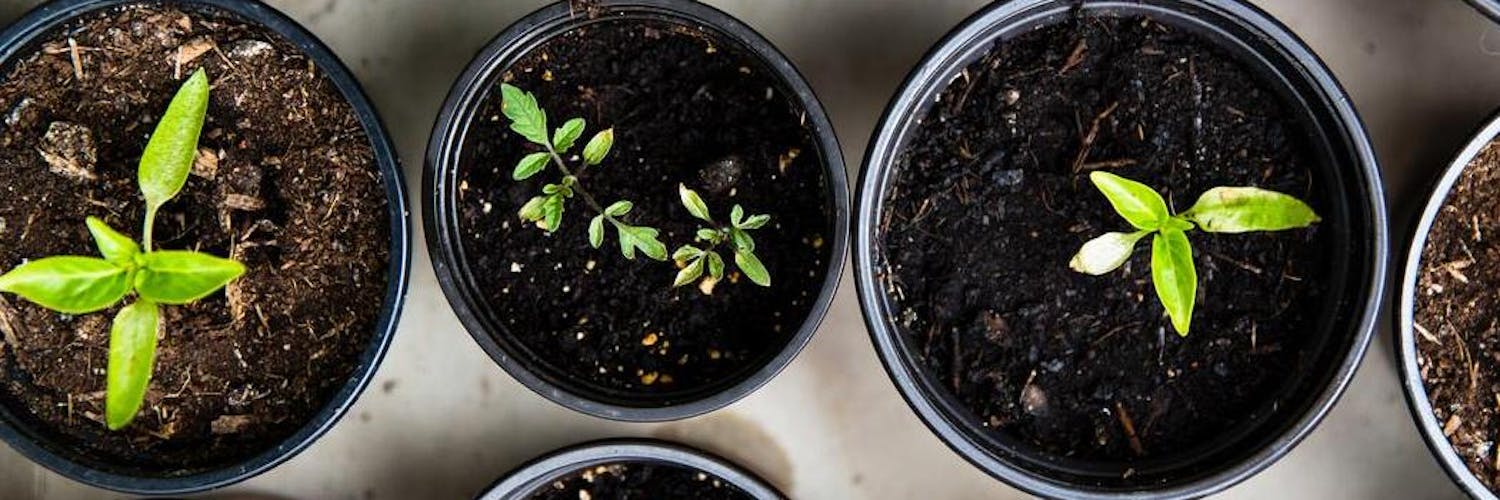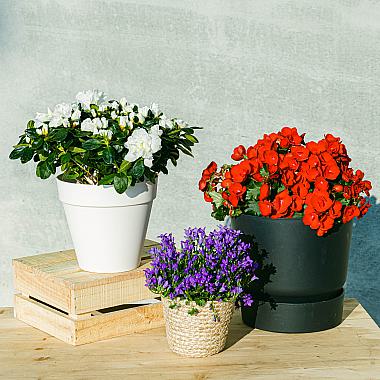How Plants Reproduce: Types and Importance of Plant Reproduction
Plants, as living beings, reproduce in order to perpetuate the species. But the ability to multiply is not only necessary for the survival of the plant world: animals and humans also benefit from the large amount of oxygen we get from this process!

In today's article we will talk about everything related to plant reproduction and we will also see how this fact is directly related to the good health of the entire planet. If you are passionate about the plant world, read very carefully!
How do plants multiply?
Types of Plants
There are more than 300,000 species of plants, which can be broadly classified into two broad categories:
Types of reproduction
Not all species reproduce in the same way, although we can divide them into two large groups: those that reproduce sexually and those that do so asexually:
1. Sexual reproduction
Sexual reproduction is one in which the union of male and female genetic material gives rise to a new being. In plants, it is the most common reproductive method.
Almost all plants that multiply sexually flower and give seeds. Inside the ovary of flowers are female and male cells called the S. gametophytes.
The process of reproduction is triggered when the plant is pollinated. Pollination occurs when insects or small flying animals such as hummingbirds, bees or flies move pollen from one plant to another.
Sexual reproduction occurs when pollen from a male gamete flower is deposited in a female gamete flower. The pollen will begin to germinate, give rise to a new flower which in turn will produce seeds and so on.
Sexual reproduction can be of two types:
- Autogamy
In this case, the plant itself produces the male and female gametes. This form of reproduction, very common, for example, on islands or places of weeds, allows the genetic characteristics of its species to be kept intact, which is essential for the plant to survive and adapt to a certain environment. - Allogamia
We speak of alogamy when pollination and fertilization occur between plants of different species. This causes the genetic code of both to intermingle, giving rise to new species. Nowadays, it is very common for nurseries to use this form of reproduction to create new varieties.
2. Asexual Reproduction
We speak of asexual reproduction when an identical cell is created from the cell of a plant, due to the mitosis procedure. Asexual reproduction usually occurs in non-vascular plants, i.e. plants that do not have roots, stems, or vessels that carry the sap.
There are many plants that can multiply asexually through one of these 4 processes:
- Mitospores – The plant creates spores by cell division (mitosis). It is the usual form of reproduction of fungi and ferns.
- Vegetative reproduction – In this case, the plant multiplies from a fragment of the plant. This type of reproduction is widely used in floristry and gardening to obtain a greater number of units of a certain species. Vegetative reproduction can be done in different ways: grafting, cutting off a piece of the stem, dividing the root, etc.
- Apomixis – Some plants have diploid ovules, which have the property of producing seeds without the need to be fertilized. This makes the plants born using this system identical to their parent.
- Propagules – These are parts of the plant that, when separated from it, can create another plant identical to the original. Propagules can be made up of multiple cells (buds, seeds, tubers, etc.), or a single cell, as is the case with spores.
Essential Requirements for Plants to Reproduce Optimally
The three essential elements that plants need to live are: carbon, oxygen, and hydrogen. In addition, they need to be nourished with minerals and nutrients that, in their natural habitat, they obtain directly from the earth.
In indoor plants, these essential nutrients (potassium, calcium, magnesium, iron, copper, zinc, or chlorine, among others), must be periodically incorporated in the form of fertilizer, so that our plants grow in optimal conditions.
The best time to breed your houseplants is in early spring. Sow your bulbs, tubers, cuttings, or roots to enjoy new plants full of life and color!
Importance of plant reproduction
We tend to consider that plants, due to the beauty and showiness of their leaves and flowers, have a merely decorative function. However, nothing could be further from the truth since its existence is vital for both animals and people to obtain food and be able to breathe.
In the home, plantsare real natural oxygen factories, capable of purifying and regulating the humidity of the environment. Therefore, understanding their reproductive system and applying it to our indoor plants is an extra benefit for everyone!
To be aware from an early age of the importance of the cultivation, maintenance and propagation of plants, which is essential to preserve the environmental balance and our own survival as a species. The more vegetation there is around us, the better the air we breathe!



